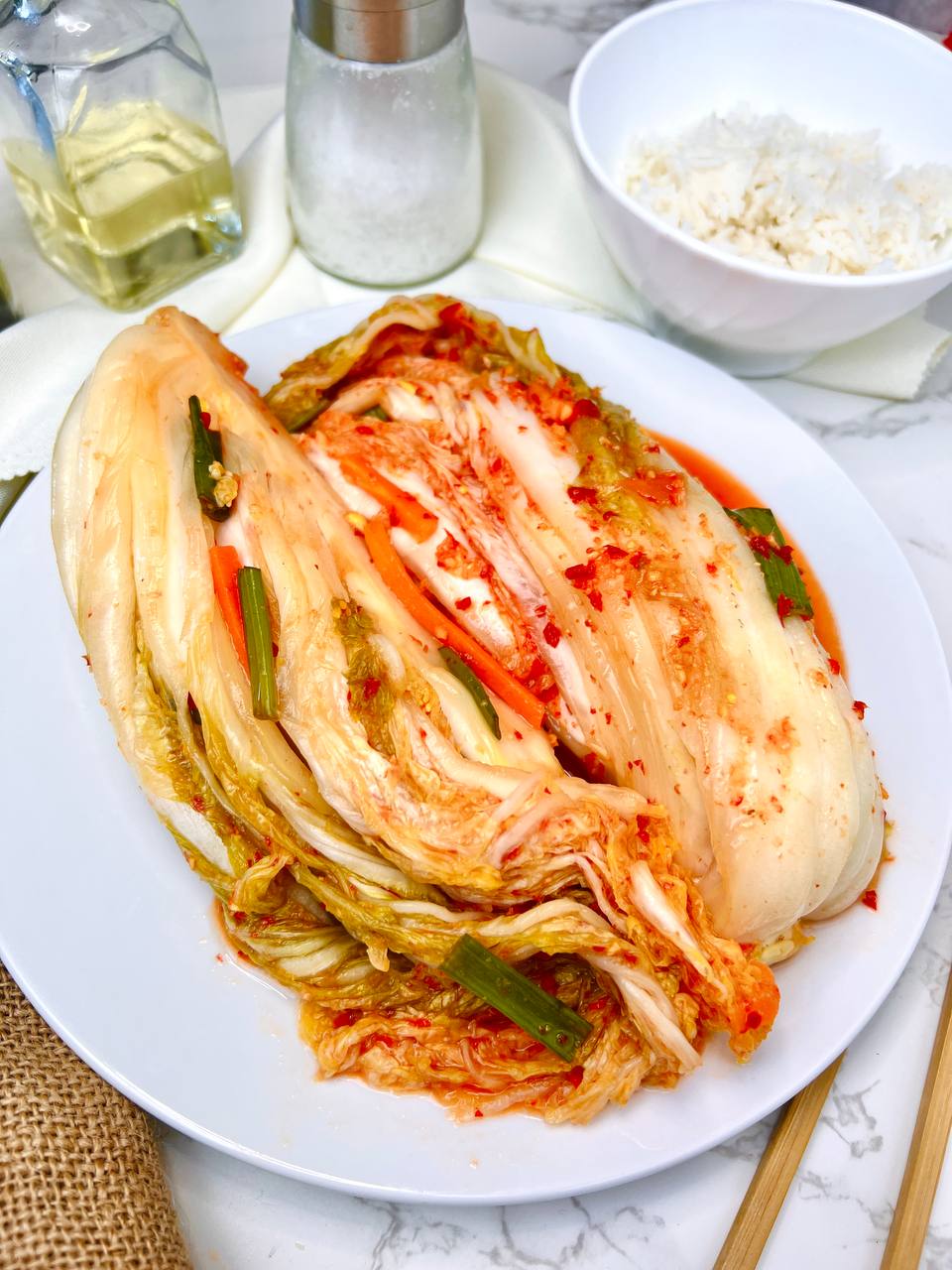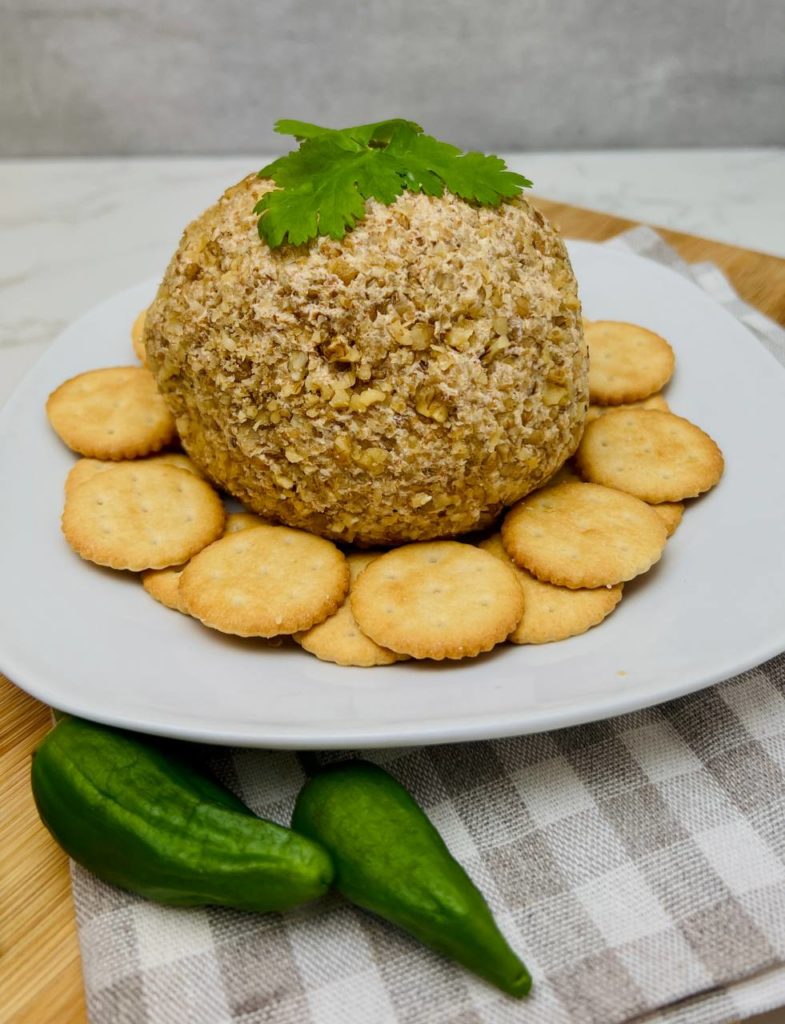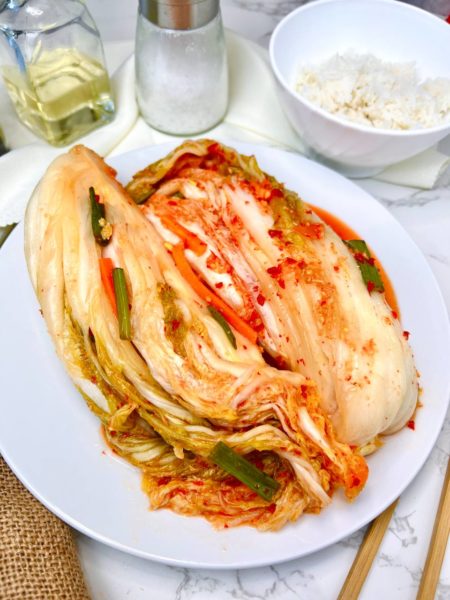
Homemade Traditional Korean Kimchi
Course: Appetizers and SnacksDifficulty: HardServings
16
servingsPrep time
2
hoursCooking time
48
hoursCalories per serving
45
kcalNo one can deny that Korean cuisine is delicious. The spicy side dish, Homemade Traditional Korean Kimchi, is among my favorites. It has a delightful acidic and peppery flavor and is prepared with a wide range of fermented vegetables such as Napa cabbage (also known as baechu), carrots, ginger, garlic, red bell peppers, red chile peppers, green scallions, rice flour, and sugar.
Kimchi has been a staple in Korean cuisine for countless years, and the secret recipe has been passed down through nearly every Korean family. Kimchi’s adaptability means it goes well with many different foods, from soups to noodles to rice. Kimchi is delicious and includes chemicals related to health and illness prevention, making it more than just a tasty snack. Napa cabbage, green onion, and garlic all provide phytochemicals (“phyto” meaning plant in Greek) to kimchi, making it a more nutritious dish. These phytochemicals are immune-boosting, anti-inflammatory, and anti-oxidant.
Approximately two hundred kimchi varieties are produced in Korea. The many diverse ways kimchi is made in Korea result from innovation of the indigenous Koreans. As one of Korea’s national delicacies, kimchi is considered by Koreans to be among the most creatively made cuisines in the world. Kimchi has gained a lot of attention from people worldwide in recent years. Kimchi’s rising profile has led to its use as a key component in several Korean and Westernized recipes in addition to its traditional role as a side dish. Its spiciness and crispness complement many other types of food.
Kimchi has been a staple in Korean cuisine for countless years, and the secret recipe has been passed down through nearly every Korean family. Kimchi’s adaptability means it goes well with many different foods, from soups to noodles to rice. Kimchi is delicious and includes chemicals related to health and illness prevention, making it more than just a tasty snack. Napa cabbage, green onion, and garlic all provide phytochemicals (“phyto” meaning plant in Greek) to kimchi, making it a more nutritious dish. These phytochemicals are immune-boosting, anti-inflammatory, and anti-oxidant.
Approximately two hundred kimchi varieties are produced in Korea. The many diverse ways kimchi is made in Korea result from innovation of the indigenous Koreans. As one of Korea’s national delicacies, kimchi is considered by Koreans to be among the most creatively made cuisines in the world. Kimchi has gained a lot of attention from people worldwide in recent years. Kimchi’s rising profile has led to its use as a key component in several Korean and Westernized recipes in addition to its traditional role as a side dish. Its spiciness and crispness complement many other types of food.
Ingredients
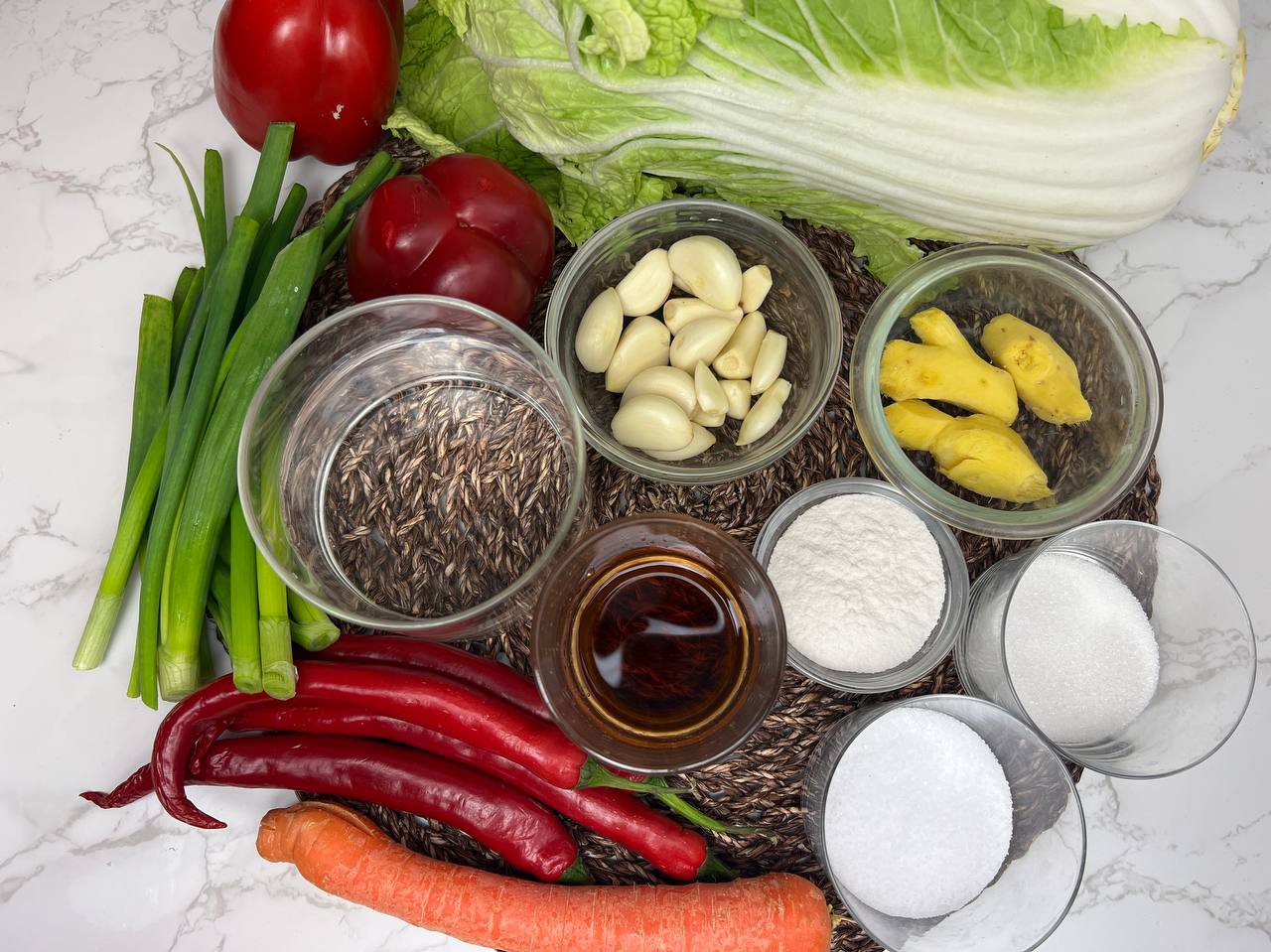
1 large Beijing cabbage (Napa cabbage)
Fish sauce (Thai fish sauce can be used) 50 ml (1.7 fl oz)
1 medium carrot
Ginger 65 g (2.3 oz)
Garlic 60 g (2.1 oz)
2 small red bell peppers
2 Red chilli peppers
bunch of green onions
Rice flour 3 tbsp
Sugar 2 tbsp
Salt 6 tbsp
Water 2 cups
Directions
- Cut the head of Chinese cabbage lengthwise into 4 parts. Rinse each part of the cabbage. Gently spread the leaves to soak each leaf with water.
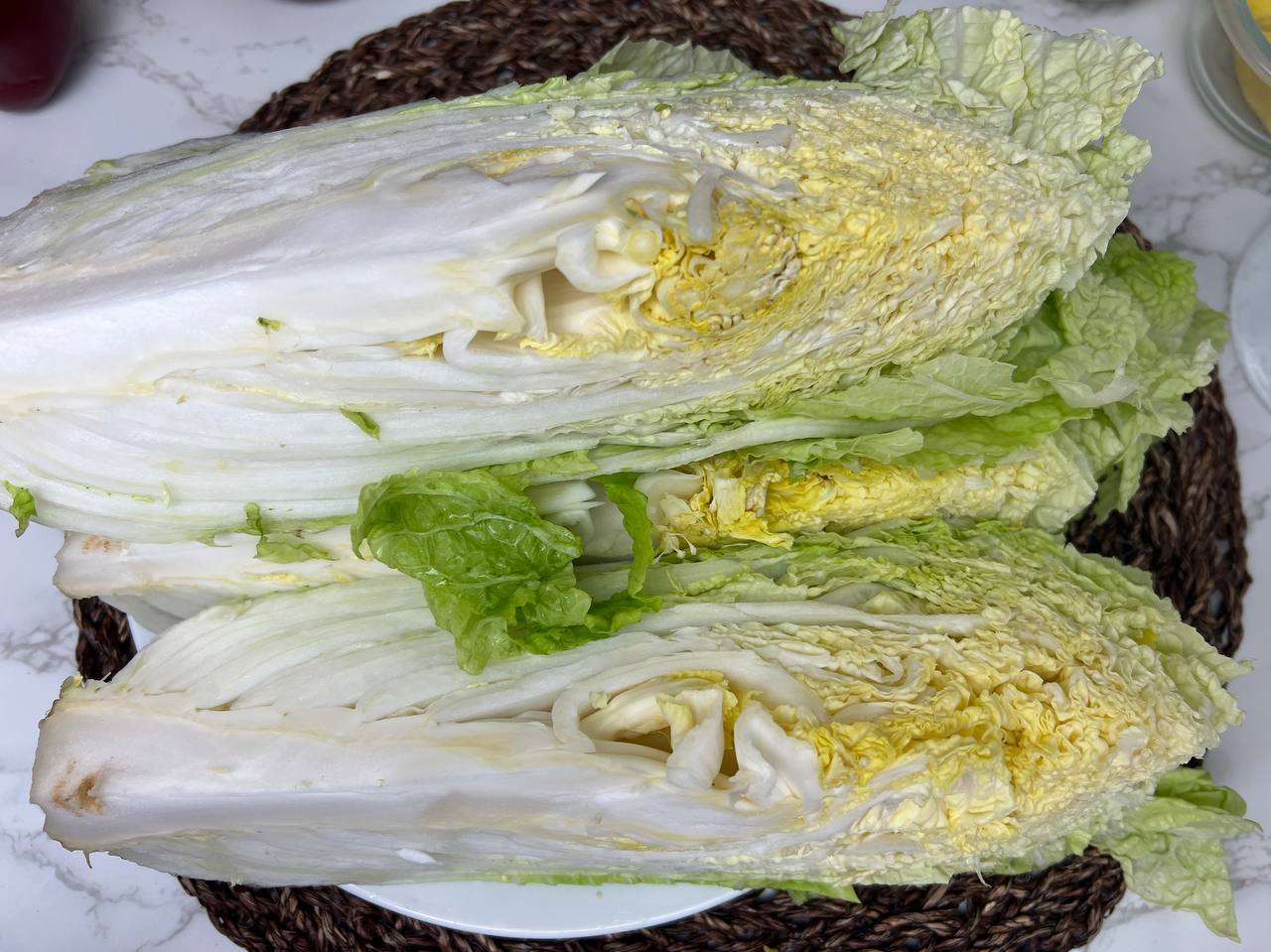
- Take two large bowls or pots and place two pieces of cabbage in the bottom of one bowl. In another bowl, put the remaining parts of the cabbage and fill them with water so that the water completely covers the cabbage. Add three tablespoons of salt to each of the cabbage bowls. If you have a very large bowl, you can use one bowl instead of two to process the entire cabbage. In this case add all 6 tablespoons of salt. Leave the cabbage to marinate for one hour.
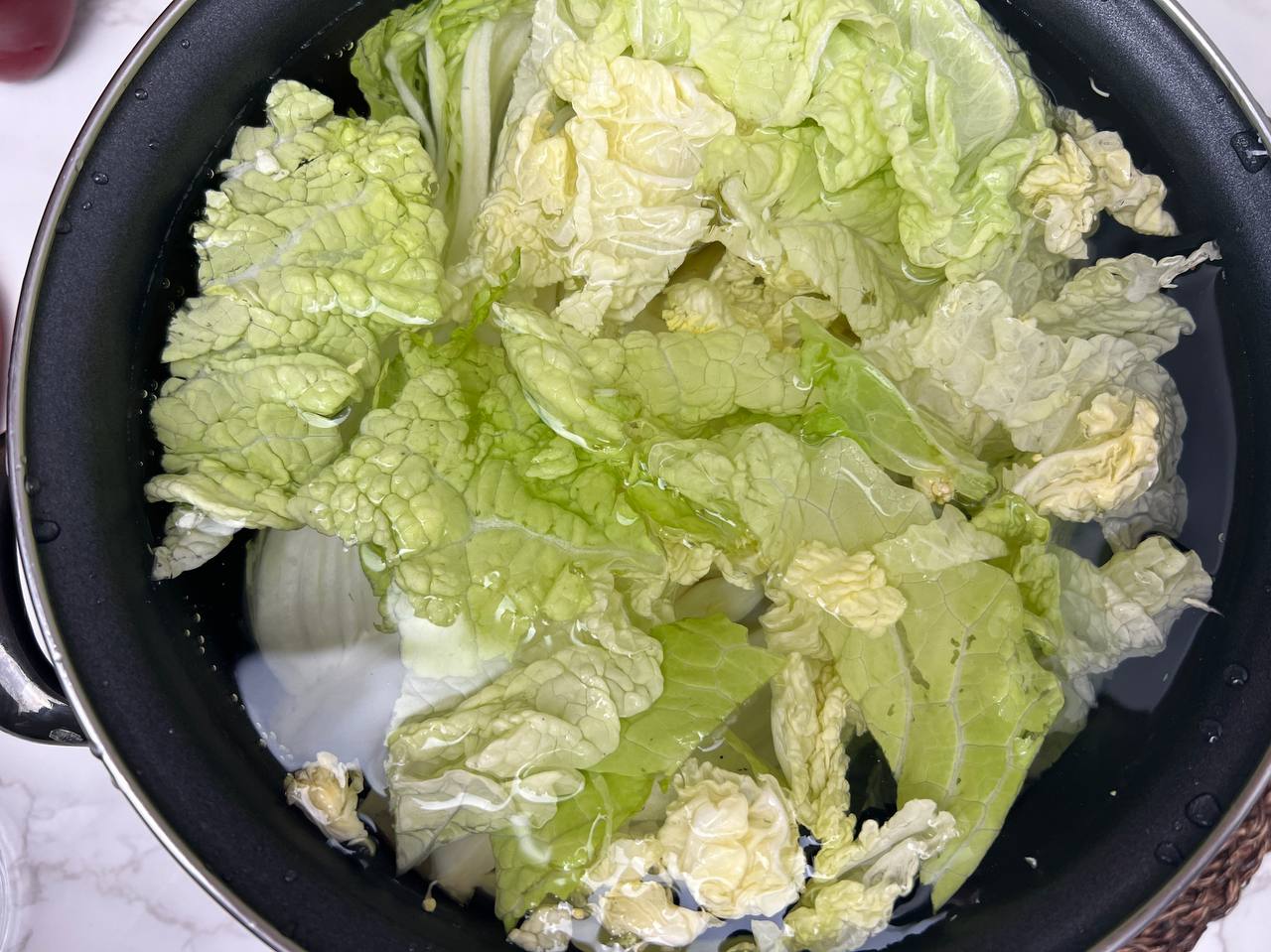
- In the meantime, let’s prepare the cabbage sauce. Combine 2 cups of water with 3 tablespoons of rice flour. Mix everything well.
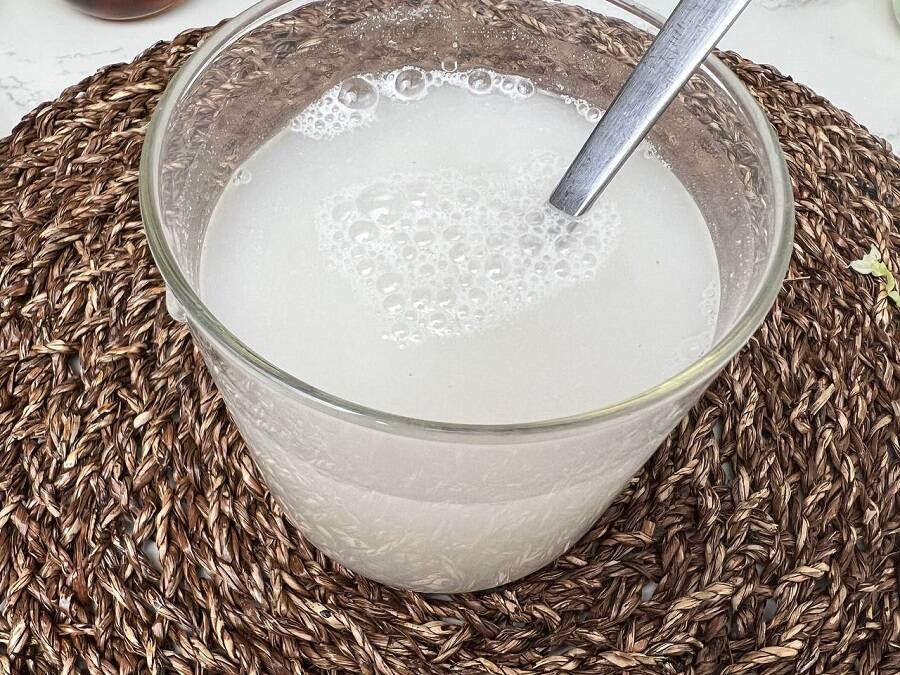
- Take a small saucepan and bring the water and rice flour mixture to a boil. Boil the mixture until it thickens. This will take approximately 3-5 minutes. Leave the mixture to cool to room temperature.
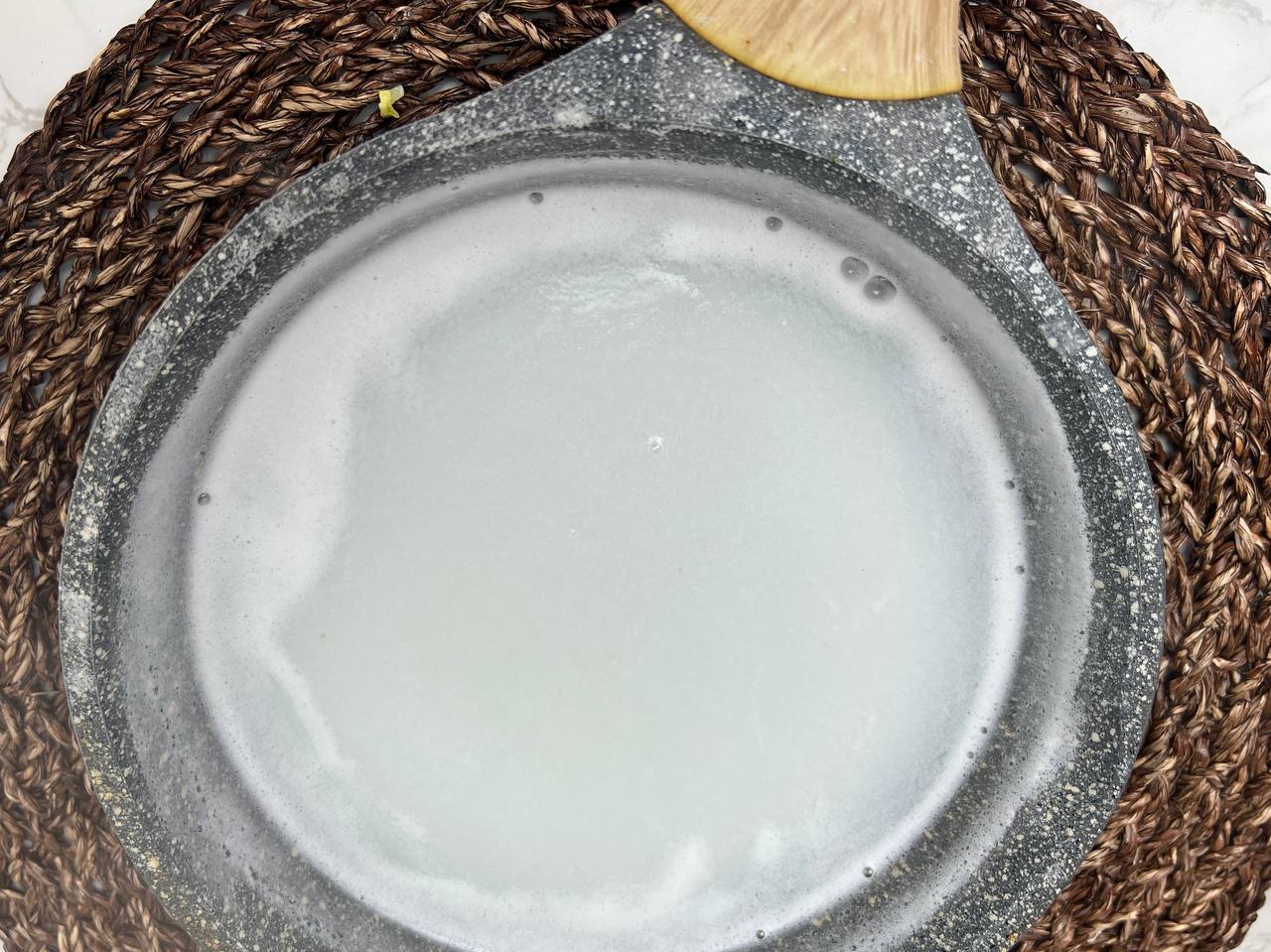
- Using a blender, grind the garlic, bell pepper, chili and ginger into a smooth paste.
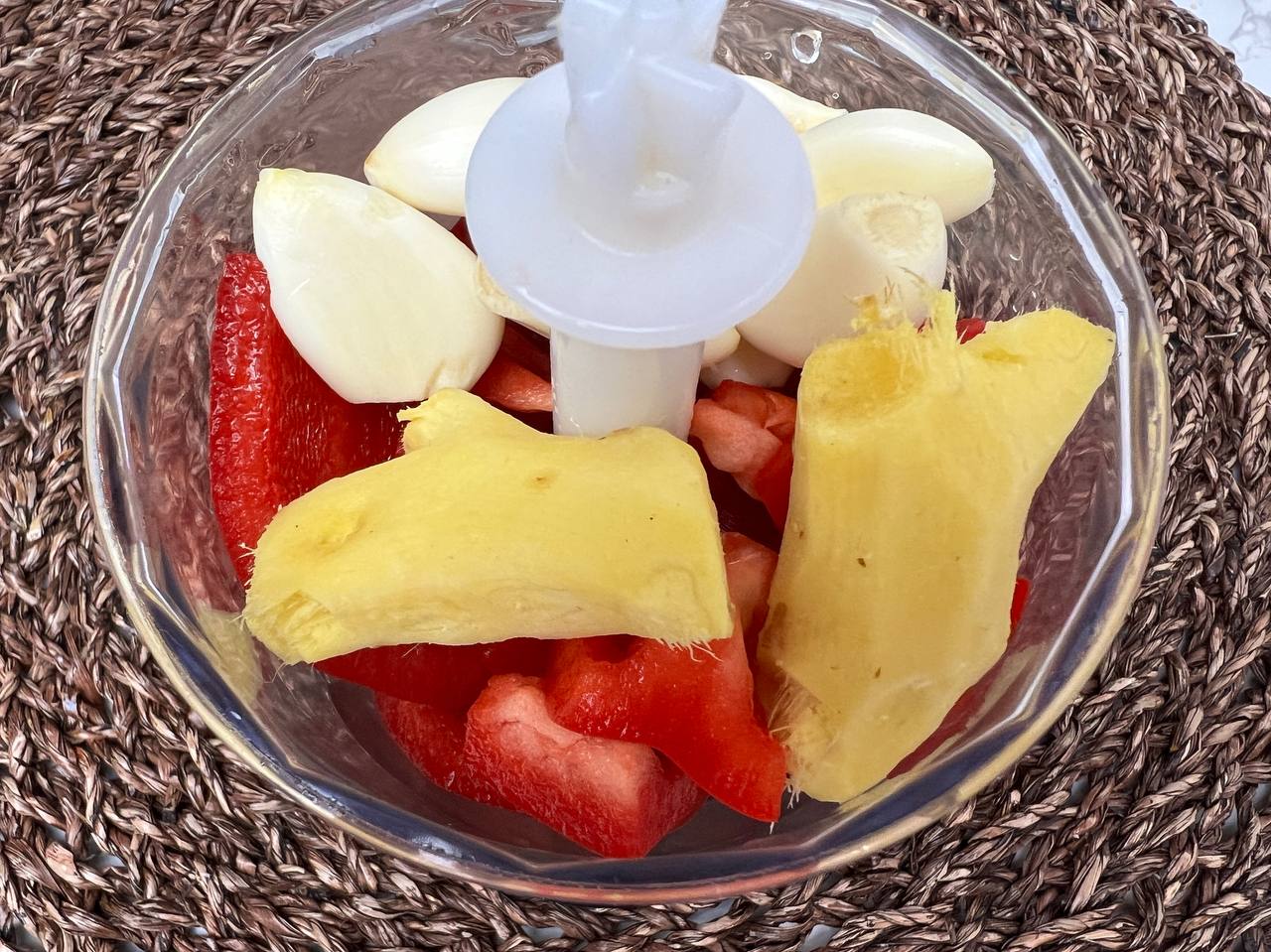
- Add 1 tbsp salt and 2 tbsp sugar to processed vegetables. Mix everything well with a spoon. Set aside
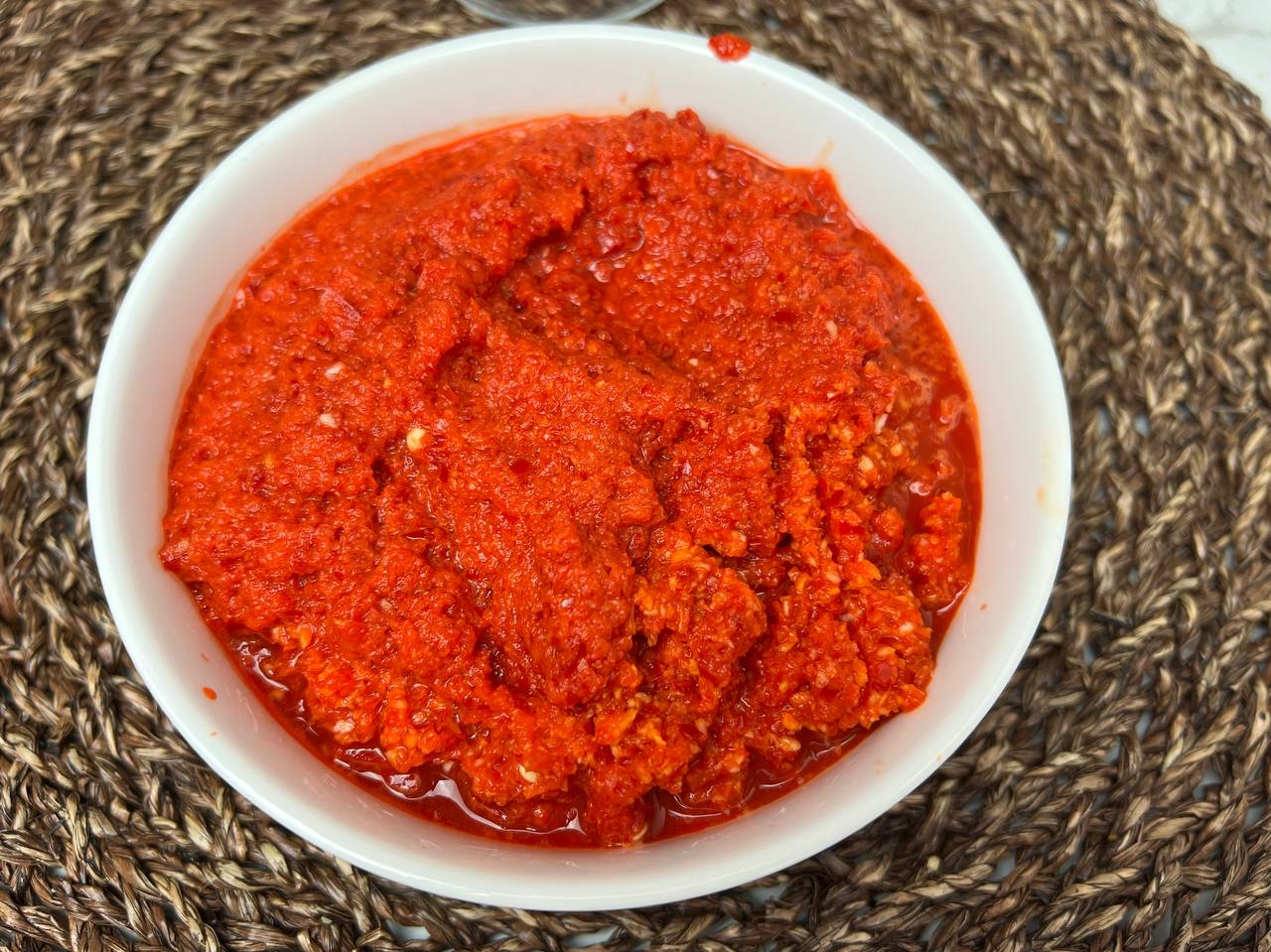
- Cut the carrots into thin strips. Cut green onions into pieces of 2-3 cm (1 inch).
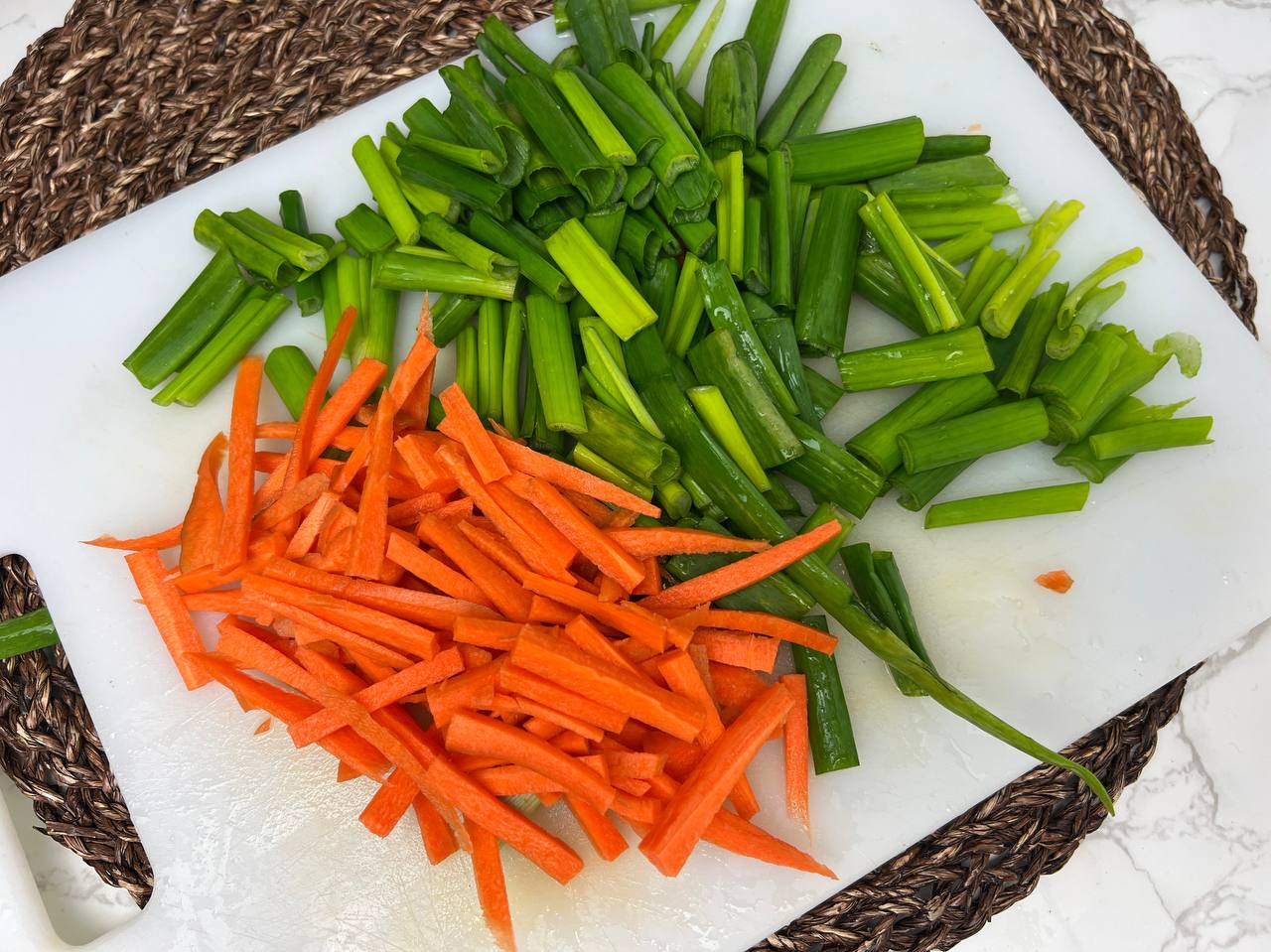
- Remove all cabbage from the salt solution and squeeze out the water thoroughly. Transfer to a large empty bowl.
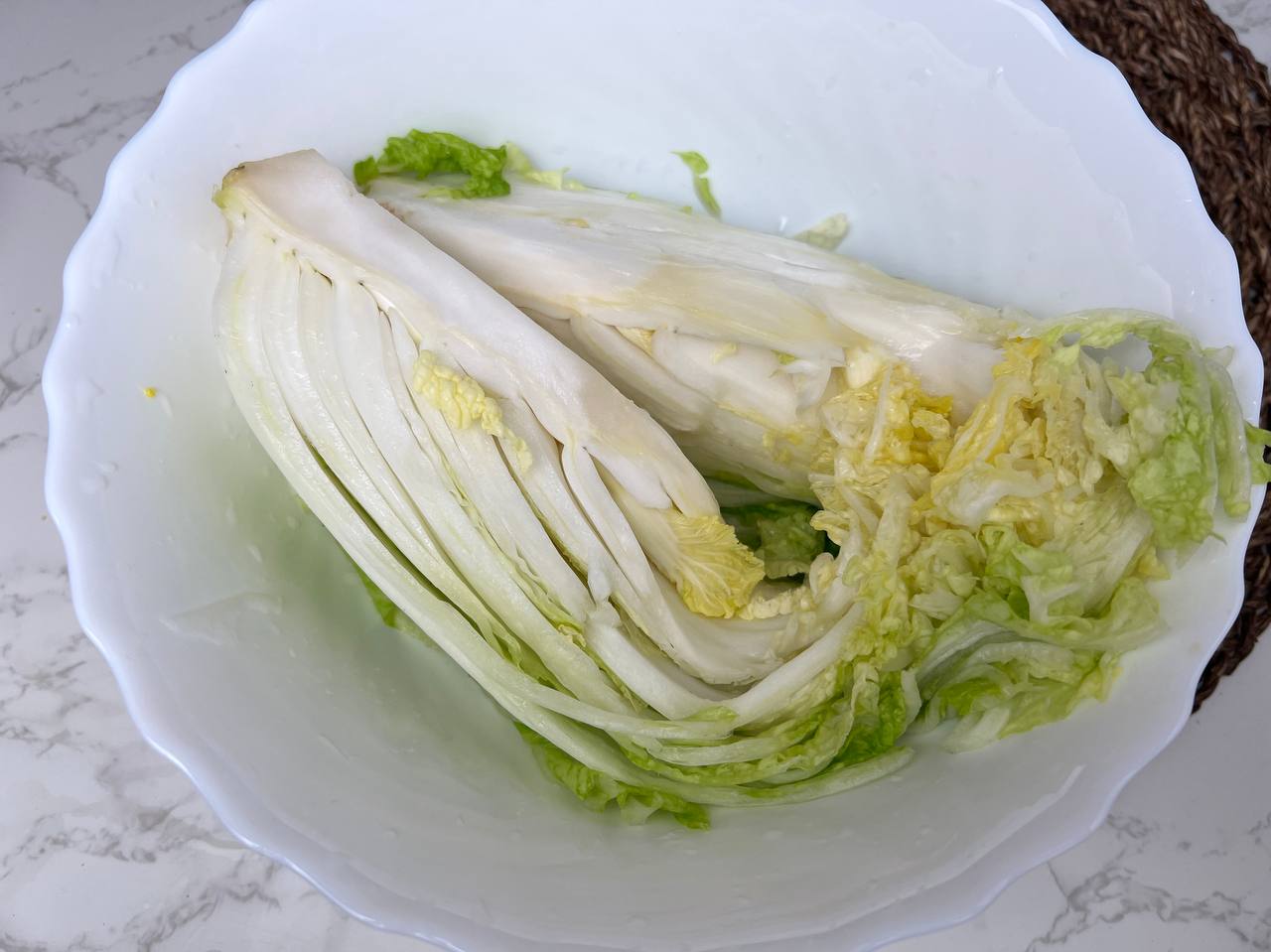
- Mix together the blended vegetables, fish sauce, and rice flour mixture. Our Kimchi sauce is ready.
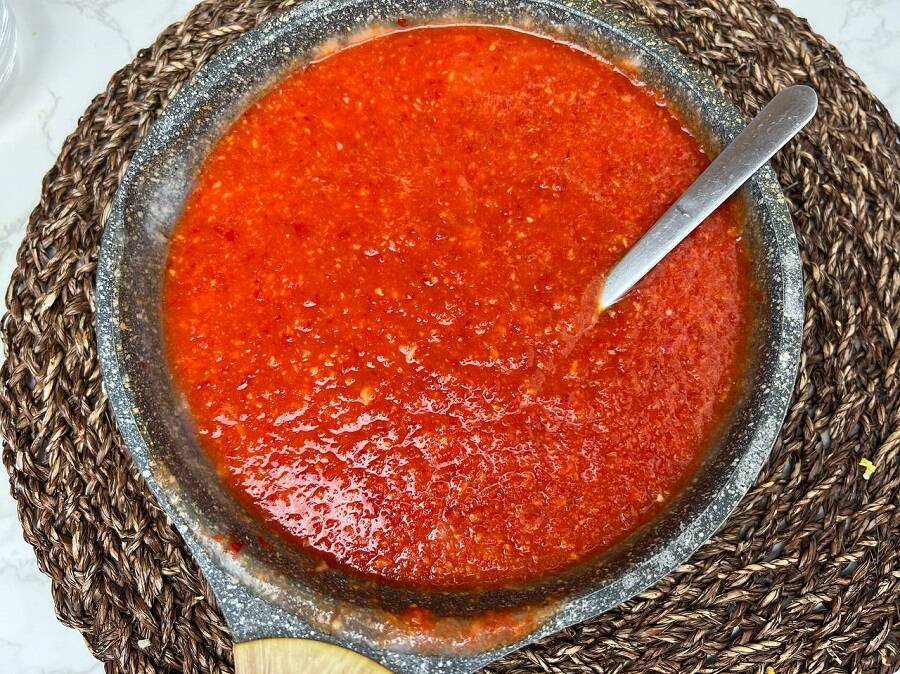
- Brush each cabbage leaf with Kimchi sauce. Add carrots and onions. Stir the vegetables until the onions and carrots are evenly distributed among the cabbage. Put everything in a large covered pot and leave to marinate for about 3-4 days.
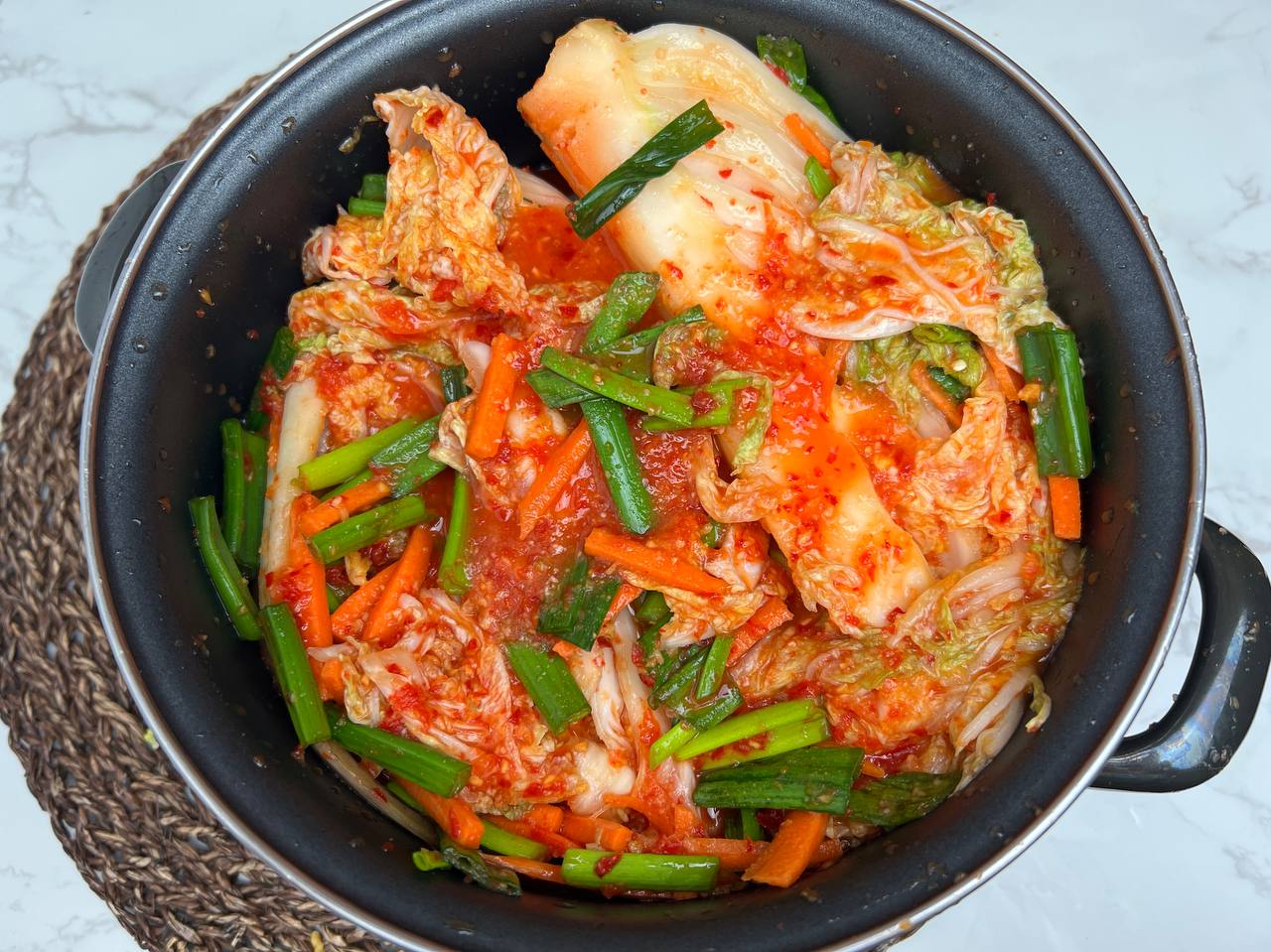
- You can store this cabbage in the refrigerator for about 1 month. The issue is that this Kimchi is so tasty you will finish it probably much faster!
